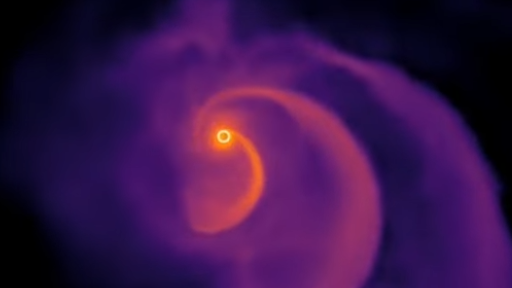According to “Fox News” report on the 26th, Fulya Kıroğlu, a doctoral student in astrophysics from Northwestern University in the United States and the main researcher, found after using computer simulations that medium-mass black holes (about 3 to 10 times) will willfully grab stars, take a few bites and throw them away, forming a piece of stellar debris and leaving cosmic tracks, just like the eating habits of many young children.
Jirolu believes that people cannot directly observe black holes because they do not emit light. So it has to be reversed, and the interaction between the black hole and its environment has to be studied.
When simulating a star the size of the sun passing through black holes of different masses, they found that the intermediate-mass black hole would first wrap the star in orbit, and every time the star makes a revolution, the black hole will swallow it again, and the whole process can circle up to 5 times. And the light emitted by the star when it is torn apart will become brighter every time. When the star finishes orbiting, only the strangely shaped and extremely dense core remains.
At this time, the black hole will not continue to swallow, but will expel this “stellar debris” from orbit and let it fly across the Milky Way. Astronomers can see this debris because it is ejected fast enough to leave behind bright light, forming hypervelocity stellar debris.
After completing this research, Jirolu next plans to simulate different types of stars to explore how they interact with black holes.
This research has been accepted for publication by The Astrophysical Journal, and the clues found in the experiment may also be of great help to astronomers looking for intermediate-mass black holes.
